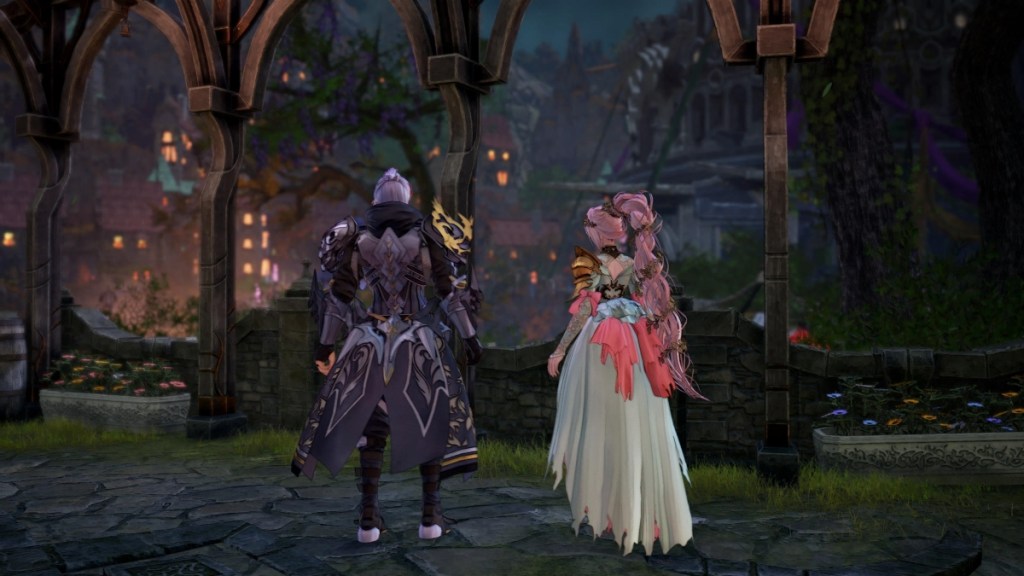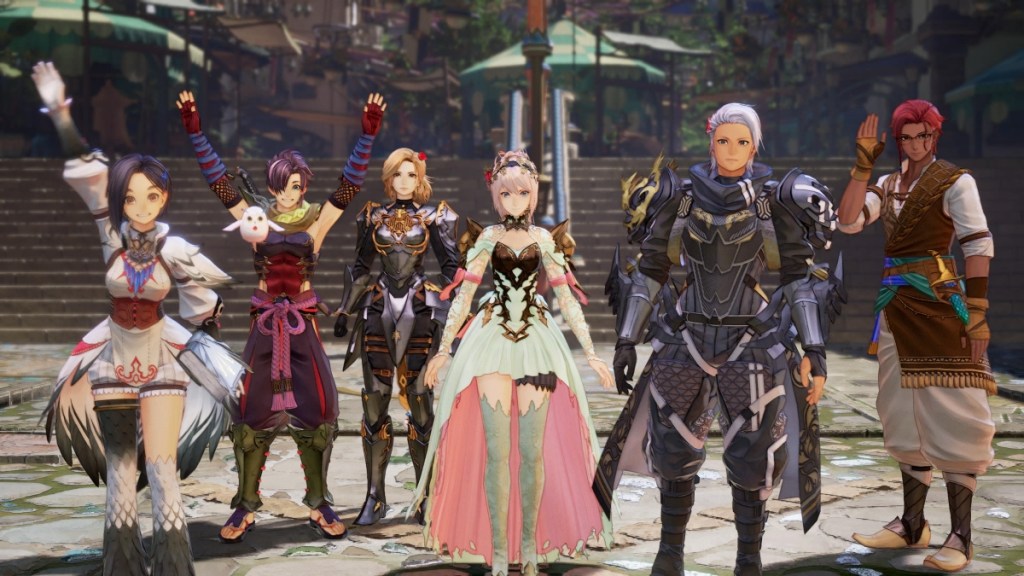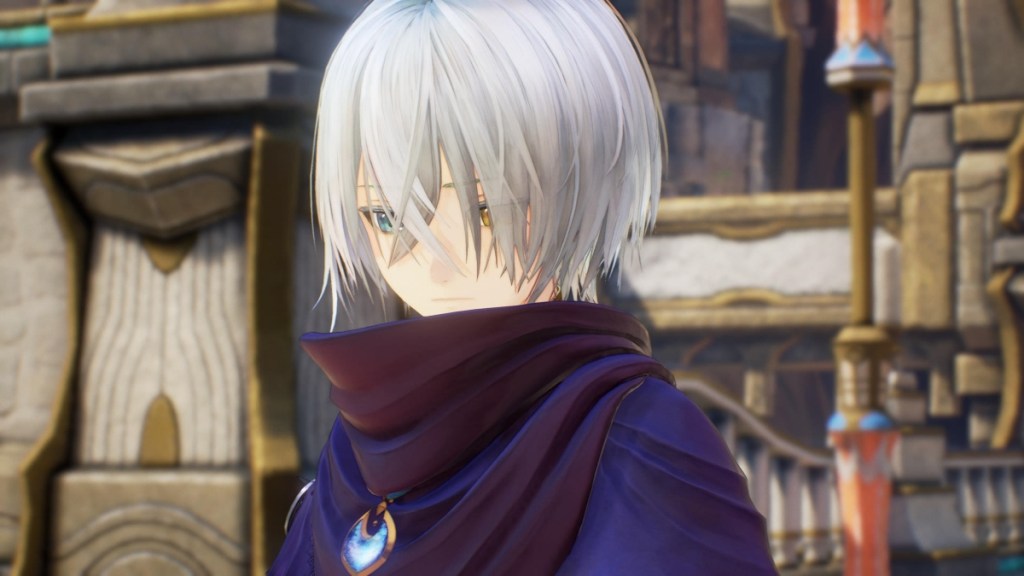The expansion for Tales of Arise, Beyond the Dawn has been two years in the making. And while it doesn’t hit all the notes, it’s a fitting addition to an already fantastic RPG.

The Tales series has been a staple of RPGs since the franchises’ origins in 1995. 2021’s Tales of Arise brought the series to modern audiences. By the time I dove into Dahna and Renah in early 2022, many people had already fallen head over heels for its spectacular combat, lovable characters, and grand aesthetics.
When the credits rolled after 59 hours of playtime, I felt satisfied, despite a rushed ending. Then, during the September’s State of Play, it reappeared, like an old friend you haven’t seen in a while. All the memories came back to me as Beyond the Dawn, an all-new expansion, was revealed. While it’s been two years since the game’s original release, it feels like Beyond the Dawn sought to capture what made the original great. After playing through Beyond the Dawn, I can confirm that it does feel like Tales of Arise, yet could’ve been much more.
Taking place two years after the events of the original, Tales of Arise – Beyond the Dawn reunites Alphen, Shionne, Rinwell, Law, Dohalim, and Kisara. This time, they’ll meet Nazamil, the young daughter of a Dahnan citizen and a Renan lord. Cursed to don the same mask as Alphen did, the team comes together to stop her doomed fate.
Tales of Arise – Beyond the Dawn Expansion (PlayStation 5 [reviewed], PS4, Xbox Series X|S, Xbox One, PC)
Developer: Bandai Namco Studios Inc.
Publisher: Bandai Namco Entertainment
Released: November 9, 2023
MSRP: $29.99

Right out the gate, you’re thrown into action and back to the frantic battles the original was known for. It’s a welcome sign for those returning to Tales of Arise, like I was. Depending on how many hours you put into the game, getting back into the flow can take some time. However, once you’ve found your footing, it all comes back to you, and it’s back to the grind.
Your progress in the base game doesn’t transfer to the expansion, to create a level playing field. You start the game at level 75, no matter what. This didn’t bother me much, since it helped ensure one couldn’t speed through battles and miss the fun.
In terms of gameplay, it’s more or less the same. There are new dungeons, equipment, and weapons, but everything remains intact from the main game, even the enemies. The combat is still the star of the show and continues to be as engaging and intuitive as before. Landing combos is still tons of fun and there’s no better feeling than landing a Boost Strike after shaving hit points off a tough enemy.
It’s a huge surprise other big RPG franchises have dabbled, but haven’t fully tapped into Tales of Arise‘s style of action combat. For me, it acts as a smoother transition between turn-based and free-range. Composer Motoi Sakuraba remains at the top of his game with the score. I can’t count the number of times I grooved along to Flame of the New Dawn mid-fight.
On a Hot Streak

Beyond the Dawn really reminds you just how fun and unique the cast was and continues to be. Whether through skits, battle dialogue, or cutscenes, they still show off their personalities with that same lovable flair. Kisara still acts like everyone’s mother, Alphen continues to obsess over Shionne, and Law can’t stop yelling. It’s like seeing your family for the holidays after being away. There are subtle changes, but everything remains the same, which isn’t a bad thing. Tales of Arise‘s colorful cast was one of my favorite aspects of the base game and it’s good to see them faithfully reunited.
The English voice actors for the characters also remain and continue to do a great job. Personally, it’s a shame not to see them in the end credits. Seeing as this may be the last time we hear them, it would’ve been fitting to have them credited alongside the Japanese cast. Regardless, standouts for me include Ray Chase’s Alphen, Bryce Papenbrook’s Law, and Katelyn Gault’s Kisara. Their performances in the main game stood out to me then and still do, as they capture that same energy.
The narrative of Beyond the Dawn is pretty standard, delivering some twists and turns along the way. It’s a little hard to get into specifics without spoiling things. The expansion doesn’t waste time in dropping big reveals. While things happen quickly, it doesn’t feel dragged out. Even still, it doesn’t hit the same highs as the base game’s narrative did.
Sure, it’s a lot to expect an expansion to live up to what came before, but it did feel a bit tame. Most of that can be attributed to no new main character arcs, which I didn’t mind, to be honest. We’ve seen the characters develop, so it lets others—mainly Nazamil—shine. As she’s the main star of the expansion, it’s better to highlight her rather than others.

Newcomer Nazamil, for me, doesn’t stand out much as a character. Her personality is a bit cliché in the beginning, with shyness being her only standout feature. It also doesn’t help that she can literally become invisible and likes to draw. However, it doesn’t make her progression through the story any less charming. While it is a touch predictable, as you learn Nazamil’s backstory, you can’t help but want the best for her.
Nazamil’s English voice actress, Ryan Bartley, does a great job of balancing the character to keep her compelling. Given her role as Rei in Neon Genesis Evangelion, it’s a safe and solid choice for the reserved outcast. Still, Nazamil’s transformation within Beyond the Dawn is as interesting as it is simple. I do think it could’ve gone deeper, but it’s effective in its delivery.
There are times in Beyond the Dawn’s narrative when the overall theme of friendship and companionship might feel too trite. Regardless, I don’t think the story had any leeway for it to go in another way. Nazamil’s personal struggles couldn’t be told without diving into the ever-present ‘power of friendship’. It’s natural that the story would lead there and befitting of the series’ commitment to crafting relationships with the party.
Forged in Fire

Beyond the Dawn‘s biggest strength is its worldbuilding. Much like the base game, the side missions, party conversations, and vibrancy stand out to me. What’s interesting this time around, however, is the fact that it continued to develop after the original game’s ending.
We see the changes we made after beating Vholran and merging the two worlds. Now that Renans live with Dahnans, we see new technology throughout the cities and Astral Artes users working with others. We also see the consequences of that, for better or worse. Tensions still remain, and the idea of bringing these two civilizations together was easier said than done.
During my playthrough, there were times when side missions revolved around issues we thought we solved in the base game. The zeugles still roam the lands and food is a rarity for those without the Gald. There’s still work to be done and we are the ones to fix it, or at least spark the change. Franchises such as Persona and Final Fantasy tend to have everything solved in the end due to “saving the world.” Beyond the Dawn subverts that, which I applaud them for. Witnessing the things we strived to change, like race relations and democracy, start to come together feels more rewarding than having it be there from the start.
For me, Tales of Arise – Beyond the Dawn fits the framework for an expansion. It adds more story, quests, and dungeons for players to enjoy without introducing any new game-changing mechanics. My playthrough lasted about 13 hours, but I could see many going up to at least 20 for completion. I did many of the new side missions, which helped slow the narrative’s often quick pace. Despite the length, the expansion doesn’t overstay its welcome. It tells a story, gives the player more stuff to do, and leaves. There’s no need to deck things out to the extreme and Beyond the Dawn showcases that restraint.

All that said, when the credits rolled on Beyond the Dawn, that feeling of satisfaction I felt from the original came back. This time, it wasn’t because I completed the game. It was because I completed the narrative. Everything felt more in place than in the original. In a way, this felt like the best way to end Tales of Arise; to tell a story of forgiveness and family from the perspective of those whose own was forged through hardship and acceptance. It fills in that much-needed hole the original ending had and goes on its own terms.
A lot of my criticism feels negative, but my experience with Beyond the Dawn was very pleasant. As a big fan of Tales of Arise, returning to Bandai Namco’s world was a personal joy. You don’t realize how much you missed the skits and combat until you witness them again.
To put it simply, Beyond the Dawn is just more Tales of Arise. If you want more of the game, it’s worth the time. Personally, while the $30 price tag is a bit too high, I don’t think you’ll be too disappointed. A little let-down, sure, but it’s hard to imagine things ending in a different way. Plus, the risks it took to craft a healing world instead of a healed one pay off.
Overall, Tales of Arise – Beyond the Dawn is an expansion fit for the main game’s already fantastic base. Fans who enjoyed the original game will find themselves feeling the same way they did before. Fortunately, Beyond the Dawn ties it up with a simple yet effective bow. While it could’ve been neater, it delivers a worthwhile experience for big-time fans.
[This review is based on a retail build of the game provided by the publisher.]









